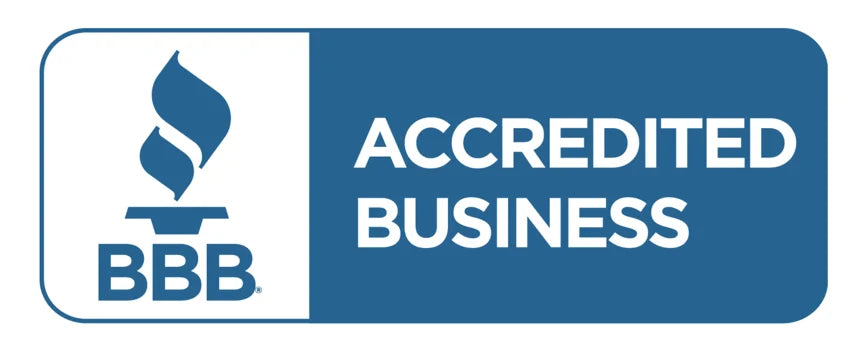A pair of Signia Hearing Aids may feel like a journey's end to fully fit, but in fact, it is only the beginning. While comfort and correct fit are required, they are not just factors that make sure that your hearing devices perform at their best. The truth is that Signia Hearing Aid requires more than a good fit to work effectively. From the management of battery care, from their moisture and environmental wear, a complete ecosystem of proper use and maintenance plays an important role in providing permanent clarity and daily dependability.
The Myth of the Perfect Fit
Why Fit Alone Isn’t Enough
When most users invest in a premium hearing device such as Signia, the focus is too much when receiving a snug and safe fit. While this initial comfort is non-pervasive, assuming that a well-fitted device will automatically be misleading is faulty. The performance of the real world of hearing devices, such as Signia, depends a lot on how well they are cared for. Dust particles, earwax, sweating, and sudden changes in temperature can interfere with delicate components placed inside the device.
The perception that "if it fits well, it should work well" ignores how well the fitting hearing device may be low in clarity or stop working perfectly if its battery, receiver, or microphone is not maintained properly. Relaxing ensures the purposeful, but the ongoing performance depends on care.
Moisture Protection for Signia Hearing Aids
Invisible Threats That Affect Daily Performance
The moisture may not look like a major threat at first glance, but for the Signia hearing aids, which often work in close contact with the skin and are exposed to sweat, humidity, and rain, this is a major concern. Internal electronic components are also sensitive to detecting moisture volume. That is why moisture safety is not optional for Signia hearing aids; This is necessary.
This often may result in failure of mafled sound, short-circulated battery, or even device failure as a result of failure to address the invisible factor. Protective measures such as storing your hearing instruments in a drying kit at night or to avoid use in a high-humidity environment can add their usable lives for months-or even years. The importance of keeping the device dry cannot be given enough emphasis.

Signia Hearing Aid Battery Care Is the Hidden Powerhouse
When Battery Maintenance Defines Performance
Even the best hearing aid cannot make a dying battery better. For Signia users, the most ignored of battery care is still one of the mission-critical areas. These devices are engineered to provide stable power for features such as increased sound processing and Bluetooth streaming. But once the battery starts to weaken or deteriorate due to the wrong, that credibility falls rapidly.
Storage of batteries at the wrong temperatures, exposing them to moisture, or failing to change them on time can cause major disruption in quality. You can see sudden sound dropouts, delayed streaming, or even omission notifications - all of which are typically misattributed to a device problem when the culprit is the battery itself.
Cleaning and Hygiene Go Beyond Aesthetics
Why Everyday Maintenance Makes a Difference
It is easy to assume that now it is enough to wipe your hearing devices with a cloth, and then it is sufficient, but the true Signia hearing aid care progresses much further. Earwax and skin debris can slowly block the microphone and speaker port, which reduces clarity or volume over time. Users often find themselves returning to the clinic with "low volume issues" that are caused by simple neglect in cleaning.
Using cleaning equipment designed especially for hearing devices, such as a wax pick or cleaning brush, helps maintain sensitive areas of the device. Including these habits into your routine can change the long-term purpose of the device while sleeping, sleeping, or during its morning time.
Adapting to Environmental Sounds Takes Time and Practice
The Brain Needs to Relearn Sounds, Too
Another aspect that contributes to the innocent performance of the Signia hearing aid lies in the user's brain and not in the device itself. When the hearing is restored after a period of damage, the brain passes through a relaying phase. This means that the interpretation of background noise, focusing on interaction, and even responding to familiar sounds may feel heavy or unnatural at first.
It is common for this adjustment period to blame the hearing aid, but it is incorrect. The real issue is adaptation. Over time, your brain becomes more accustomed to the range of new sounds being distributed by the Signia hearing aid. Support from an audiologist, regular check-ins, and patience by themselves will create a big difference.
Software Updates and Device Calibration Matter
Keeping Up With Digital Precision
Modern Signia Hearing Aids are software-powered devices that sometimes benefit from firmware updates and recalibrations. Like a smartphone or laptop, these devices also develop with software updates that can reduce noise, cancel response, or increase Bluetooth connectivity.
The hearing instruments cannot work to their full potential by failing to leave the audiologist's visit to receive these updates or implement these updates, even if they feel physically fine. Always make sure that your device is software current and adapted to your specific hearing profile.
Psychological Comfort and Realistic Expectations
Mental Readiness Is Key to Long-Term Success
Even if a hearing aid works perfectly from a technical point of view, psychological discomfort or unrealistic expectations can affect the experience. Some users expect immediate changes, forgetting that the actual benefits are cumulative. The feelings of frustration during initial use are not uncommon, especially if the hearing loss was untreated for years.
Accepting these emotional stages and managing expectations can help users to become more open to knowing how their device works, how to take care of it, and when to ask for help. Innocent functioning is not only about hardware - it is also about mentality.

When Should You Seek Professional Help
Listening to the Warning Signs
If you have taken every precaution and still experience inconsistent performance from your Signia hearing aid, it may be time to see an audiologist. Symptoms such as buzzing, sudden power-off, or fluctuations are signs of deep issues. Do not think that these are normal, especially if you have practiced good battery care and moisture protection.
Early service and diagnosis can catch underlying problems before they result in the need for permanent damage or expensive repair. Audiologists can also educate you on advanced features that you can reduce.
Conclusion
In the world of advanced hearing solutions, Signia hearing aids require more than a good fit to work effectively. True performance lies in daily care habits, understanding how environmental factor affects functionality, and a commitment to regular maintenance. Battery care, moisture protection, and frequent cleaning are not add-ons- they are essential practices that maintain the better quality you require from the Signia hearing aid device.
More importantly, users must develop patience and mental flexibility to allow a smooth transition to natural hearing. With any life-growing equipment, it is important to maximize the ongoing engagement value and longevity.
For those seeking the best possible hearing aid experience, BUY HEARING AID not only provides Signia products but also equips users with expert guidance, support, and care resources that go far beyond the initial purchase. Because hearing well is not just about wearing a device—it’s about living better every day.
FAQ Section
Why does my Signia hearing aid sound weak even though it fits well?
Your hearing aid might be affected by blocked microphones, depleted batteries, or moisture inside the device. A good fit is only one part of optimal performance.
How do I protect my Signia hearing aids from moisture?
Store them in a dry box or dehumidifier overnight and avoid wearing them in rain, during workouts, or in humid environments without proper protection.
How often should I clean my Signia hearing aids?
Ideally, clean them daily using a soft brush and wax pick to remove debris. Have them professionally cleaned every few months.
Can battery issues affect sound quality in Signia hearing aids?
Yes, old or poorly stored batteries can cause reduced clarity, sudden shutdowns, or inconsistent volume in your hearing aids.










